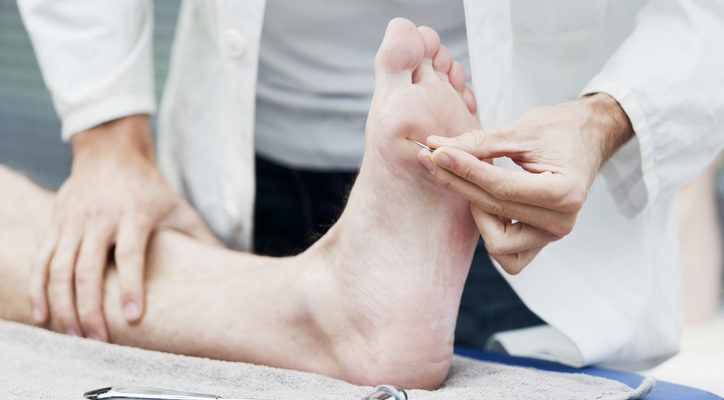Diabetic foot is a distressing condition for diabetic patients. It is essential to pay attention to your feet to prevent serious complications such as amputation. The term diabetic foot is a series of bruises or injuries on your foot due to a problem with the nervous and cardiovascular system.
Lesions may form, and this compromises the functionality of your legs. You can get treatment for diabetic foot Las Olas at Advanced Foot, Ankle, & Wound Specialists. Here is how to diagnose the systems and the action to take.
Symptoms of diabetic foot
The symptoms and signs of diabetic foot differ amongst individuals depending on the severity of the condition. Some symptoms are severe, while others are mild. The first thing to note is a sensation in the feet. Normally, this manifests as electric shocks, especially at night.
Also, the feet may feel less sensitive, and you may develop corns or blisters. Another symptom is cuts or injuries, changes in color, cold feet, and a bacteria or fungal infection due to excess glucose.
Deformity of your feet is another serious problem that can occur due to decreased muscles. It can change your posture or the way you walk because of the poor distribution of weight.
For injuries, there is an increased risk of developing infections, and your legs may bleed. Even though your sugar levels may not be alarming, it is vital to seek medical health if you notice these symptoms.
Treatment of diabetic foot
The first notable sign of diabetic foot is skin lesions or ulcers. These develop in the plantar area or fingers and can lead to a condition known as gangrene.
At the emergency section, the healthcare team cleans and dresses the wound. Also, your doctor may prescribe immobilization equipment like the cast boot.
Sometimes your doctor may prescribe surgery to remove dead tissue. Also, to treat the peripheral vascular condition, the doctor conducts an artery bypass to aid blood circulation. In some extreme cases, your doctor can recommend limb amputation.
The best diagnosis of treating diabetic foot is to follow therapy and preventive care. It is crucial to have a regular blood sugar check and other examinations as prescribed by the doctor. In addition, maintain personal hygiene by ensuring your feet are clean and dry.
Tips in managing diabetic foot
You can manage diabetic foot by washing your feet in warm water and mild soap. After that, dry thoroughly, and do not wear socks for the feet to dry. Use a soft towel to prevent excessive irritation and wear breathable footwear.
Change your socks regularly and wear a clean pair all the time. When clipping your nails, do not use clippers as it can increase the risk of injury, instead, use cardboard files as they are safer. Then, check the soles of your feet for lesions, corns, and blisters. Lastly, take part in regular exercises to promote blood circulation and avoid unhealthy habits such as smoking.
Diabetic foot is a serious condition that can lead to amputation. Book an appointment with the team at Advanced Foot, Ankle, & Wound Specialists for treatment and medical advice on preventing this condition.













Comments